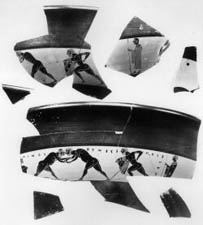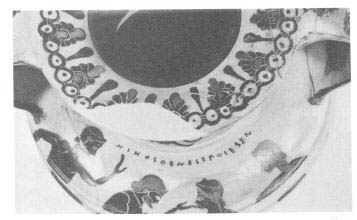The names of most of the potters and painters of Athenian figure-decorated vases are unknown to us. But some sign their vases, using the verbs egrapsen or epoiesen. Sophilos is our earliest Athenian example, although there are earlier examples from Corinth.
Egraphsen must mean painted:
Doris egraphsen = Douris painted [me]
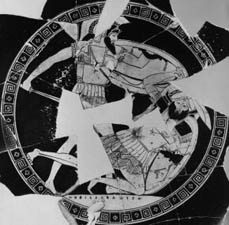
An epoiesen inscription indicates 'made', and could conceivably refer to the painting ('so and so did this'). But when found alongside an egraphsen inscription, it most likely means 'potted':
Kle[i]tias [egra]phsen. Ergotimos epoiesen = Kleitias painted [me]. Ergotimos potted [me].
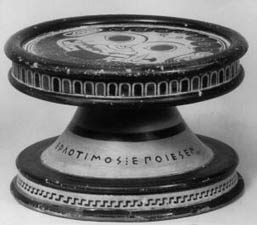
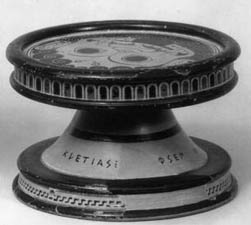
Sometimes the person signs as potter and painter:
Exekias egraphsenkapoesme = Exekias painted and potted me
Occasionally the inscriptions suggest that skills were passed down through the generations:
Tleson ho Nearchoepoiesen = Tleson, som of Nearchos, made [me]
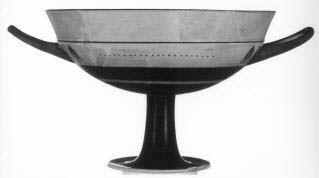
Insight into workshop practices is provided in cases where the epoiesen signatures of one person are manifestly written by different hands. In these cases epoiesen could refer to the potter or workshop-owner.
